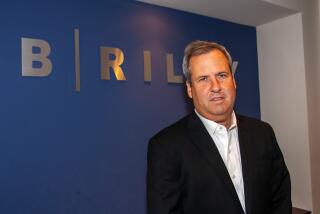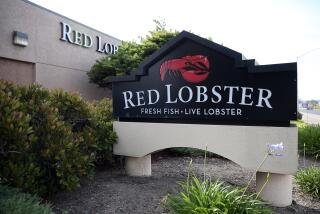Liquidation of Drexel Is Ending on a High Note
- Share via
NEW YORK — For a firm that caused so much controversy and acrimony in its day, Drexel Burnham Lambert is about to slip into history rather quietly.
Today, the DBL Liquidating Trust set up four years ago to liquidate the bankrupt firm’s assets and distribute the proceeds to creditors will ask a U.S. Bankruptcy Court judge to certify that its work is complete.
If U.S. Bankruptcy Judge Francis Conrad agrees, the trust will make one final distribution to Drexel’s creditors and then, as of April 30, DBL will be terminated and the Drexel bankruptcy will be officially over.
The end comes on a high note, say officials and attorneys for both the trust and its creditors. Matters turned out so well, in fact, that Conrad and some others question whether Drexel needed to declare bankruptcy at all.
“It started out acrimoniously, but became a cooperative effort,” said Rob Ladd, who served as chairman of the unsecured creditors committee representing creditor First City Bancorp of Texas, and who is now a partner with the Arthur Andersen accounting firm in Houston.
Close-to-final figures prepared by the trust show creditors recouping much more of their money than anyone had expected, and the liquidation is ending in relatively rapid fashion for such a large and complex case.
“This case showed you could have a creative, reasonable solution to a very complex, high-stakes matter and have a decent return to the creditors over time,” said Marc Kirschner, the attorney for one of the primary committees of Drexel creditors.
Part of the credit goes to junk bonds--the very instrument that made Drexel one of Wall Street’s most powerful firms and ultimately brought it down. After Drexel’s reorganization plan was approved, the junk-bond market rebounded, boosting the value of Drexel’s remaining assets and thus increasing the recovery for creditors.
Since the DBL Liquidating Trust was created in April 1992, as part of the reorganization plan that followed Drexel’s 1990 bankruptcy filing, the trust has liquidated all of Drexel’s assets and distributed more than $2.2 billion to creditors. It plans one final distribution of about $18 million in mid-April before it ceases operations. A final hearing to close the books for good is slated for May 16.
According to the most recent figures, many groups of creditors--or, in some cases, investors who bought claims from them at a discount--have recouped most or even all of their money. One group, for instance, received 81.2 cents on the dollar as of Dec. 31, compared with a December 1991 projection of 66.8 cents and earlier projections that were much lower. Other groups got back all of their claims, plus a little interest.
Bankruptcy creditors aren’t often this fortunate, but Drexel always had a penchant for going its own way. In its heyday, Drexel was Wall Street’s most feared investment bank--a brash, swaggering firm that helped fuel the 1980s takeover boom by making huge amounts of financing available through its high-yield, high-risk junk bonds.
More to Read
Inside the business of entertainment
The Wide Shot brings you news, analysis and insights on everything from streaming wars to production — and what it all means for the future.
You may occasionally receive promotional content from the Los Angeles Times.










